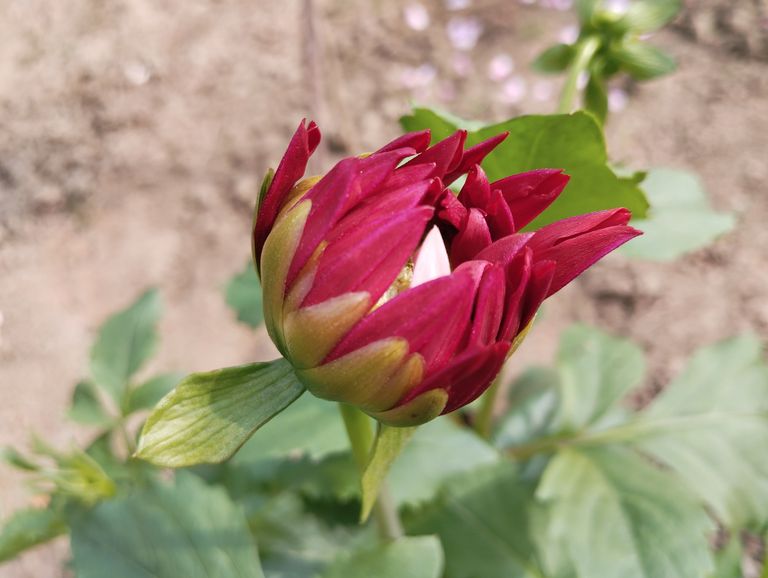
The Beauty of Dahlia Flowers.
Nature’s canvas is adorned with countless wonders, but few flowers can rival the charm and elegance of dahlias. Known for their dazzling array of colors, intricate patterns, and bold shapes, dahlias have captured the hearts of gardeners and flower enthusiasts alike. These stunning blooms are more than just ornamental plants; they symbolize elegance, strength, and creativity.
A Journey Through Time
The history of dahlias traces back to the lush landscapes of Central America, particularly Mexico. These flowers were first cultivated by the Aztecs, who admired their unique beauty and used them for various purposes, including medicine and food. Dahlias were introduced to Europe in the late 18th century, where they quickly gained popularity among botanists and gardeners. Today, they are celebrated worldwide for their extraordinary diversity and resilience.
A Kaleidoscope of Colors and Shapes
Dahlias come in an astonishing variety of colors, ranging from vibrant reds and oranges to soft pastels and pure whites. Their petals can be single, semi-double, or fully double, creating a mesmerizing display of textures and forms. With over 42 recognized species and thousands of hybrids, dahlias offer endless possibilities for creativity in gardens and floral arrangements.
Some of the most popular dahlia varieties include:
- Pompon Dahlias: Small, globe-shaped blooms with tightly packed petals.
- Cactus Dahlias: Spiky petals that radiate outward, resembling a starburst.
- Dinner Plate Dahlias: Massive blooms that can reach up to 10 inches in diameter, perfect for making a bold statement.
Symbolism and Significance
Dahlias hold deep symbolic meaning in various cultures. They are often associated with elegance, dignity, and inner strength. In the Victorian era, dahlias represented commitment and a lasting bond, making them a popular choice for wedding bouquets and arrangements.
Their diverse forms and colors also symbolize creativity and individuality, encouraging people to embrace their uniqueness and express themselves freely.
Growing and Caring for Dahlias
Dahlias are relatively easy to grow, making them a favorite among gardeners. They thrive in well-drained soil and full sunlight, requiring regular watering and occasional fertilization. Proper staking is essential for taller varieties to support their heavy blooms.
To enjoy dahlias year after year, gardeners often dig up the tubers in late fall and store them in a cool, dry place during winter. Replanting in spring ensures a vibrant display of flowers throughout the summer and early fall.
Dahlias in Floral Design
The versatility of dahlias makes them a popular choice for floral arrangements. Their bold shapes and vibrant hues add depth and drama to bouquets, centerpieces, and event decorations. Whether paired with soft roses for a romantic look or arranged with wildflowers for a rustic vibe, dahlias always steal the show.
Dahlias and the Environment
In addition to their aesthetic appeal, dahlias play a vital role in supporting local ecosystems. They attract pollinators such as bees and butterflies, contributing to the health of gardens and surrounding environments.
The beauty of dahlia flowers lies not only in their breathtaking appearance but also in their rich history, symbolic significance, and practical uses. Whether adorning a garden, gracing a bouquet, or inspiring an artist, dahlias are a testament to nature’s ability to create unparalleled beauty.
Their timeless charm and resilience remind us to appreciate life’s vibrant colors and embrace the ever-changing seasons. So, the next time you encounter a dahlia, take a moment to marvel at its splendor and let it inspire your own creativity and strength.
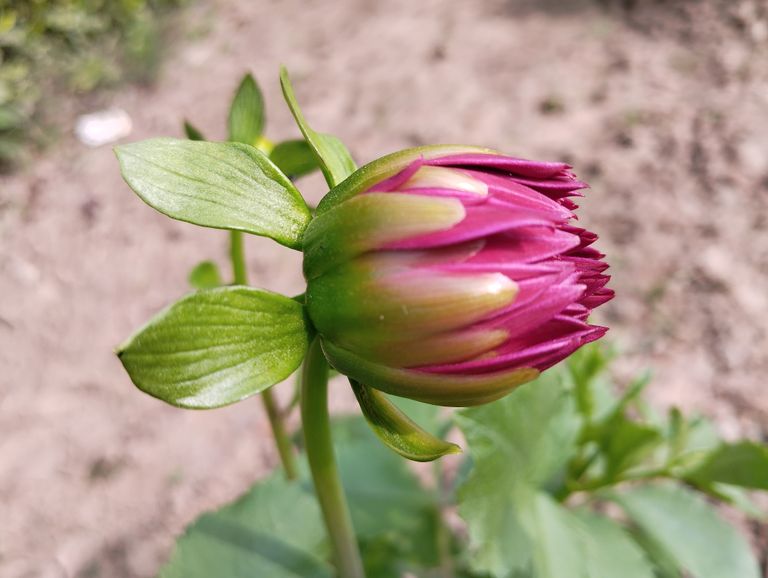
Dahlia Care Guide: Tips for Growing Beautiful Blooms
Dahlias are among the most vibrant and versatile flowers, loved for their stunning colors and unique shapes. Native to Central America, these perennial plants can be the highlight of any garden. If you're planning to grow dahlias or already have some, here's a comprehensive guide on how to care for them to ensure they thrive and bloom profusely.
- Choosing the Right Dahlia Varieties
Dahlias come in various sizes and forms, from small pom-pom flowers to large dinner-plate varieties. Before planting, consider:
Size: Compact varieties (12-24 inches) suit containers, while taller ones (3-6 feet) are ideal for garden beds.
Color: Choose colors that complement your garden's palette.
Bloom Size: Dinner-plate dahlias produce flowers up to 10 inches in diameter, while smaller ones are perfect for bouquets.
- Best Growing Conditions for Dahlias
Dahlias are relatively easy to grow if you provide the right environment:
a. Sunlight
Dahlias need at least 6-8 hours of direct sunlight daily.
Morning sunlight is ideal as it helps prevent fungal diseases.
b. Soil
Dahlias prefer well-drained, fertile soil.
The ideal pH level is between 6.0 and 7.5.
Improve heavy clay soil with compost or organic matter.
c. Climate
Dahlias thrive in mild to warm climates (50-85°F).
They are frost-sensitive, so avoid planting until the danger of frost has passed.
- Planting Dahlias
Follow these steps for successful planting:
a. Timing
Plant dahlia tubers in late spring when the soil has warmed up to at least 60°F.
b. Spacing and Depth
Space tubers 18-24 inches apart.
Dig a hole about 6-8 inches deep and place the tuber with the "eye" facing up.
c. Staking
For tall varieties, insert sturdy stakes or cages at planting time to support the stems as they grow.
- Watering Dahlias
Proper watering is crucial for healthy growth:
Water sparingly after planting until shoots emerge to prevent tuber rot.
Once established, water deeply 2-3 times a week.
Avoid overhead watering to reduce the risk of fungal diseases.
- Fertilizing Dahlias
Use a low-nitrogen fertilizer (e.g., 5-10-10) to promote blooms instead of excessive foliage.
Fertilize every 3-4 weeks during the growing season.
Stop fertilizing in late summer to encourage tuber development for winter storage.
- Pruning and Deadheading
Pinch out the center shoot when plants are 12-15 inches tall to encourage bushier growth.
Regularly remove spent blooms to promote continuous flowering.
Cut back stems to just above a set of leaves to maintain a neat appearance.
- Pests and Diseases
Dahlias can be affected by pests and diseases, but preventive measures can help:
a. Common Pests
Aphids: Use insecticidal soap or a strong jet of water.
Slugs and Snails: Apply organic slug bait or handpick at night.
Spider Mites: Increase humidity and spray with neem oil.
b. Diseases
Powdery Mildew: Improve air circulation and avoid overhead watering.
Root Rot: Ensure proper drainage and avoid overwatering.
- Overwintering Dahlias
In colder climates, dahlias need to be dug up and stored:
After the first frost, cut back the foliage to 4-6 inches.
Carefully dig up the tubers and remove excess soil.
Store tubers in a cool, dry place (40-50°F) in peat moss or sawdust.
Check periodically for rot or dehydration during storage.
- Growing Dahlias in Containers
Dahlias can also thrive in pots if you follow these tips:
Use a large pot (at least 12-16 inches wide).
Choose dwarf or compact varieties for better results.
Ensure the container has good drainage holes.
- Tips for Maximizing Bloom Production
Provide consistent care, especially during peak blooming seasons.
Remove side buds to focus energy on producing larger blooms.
Use organic mulch to retain soil moisture and regulate temperature.
Dahlias are a gardener’s delight, rewarding you with stunning blooms when properly cared for. With attention to sunlight, soil, water, and regular maintenance, you can enjoy a vibrant display throughout the growing season. Whether planted in beds or pots, dahlias are sure to elevate your garden's beauty.
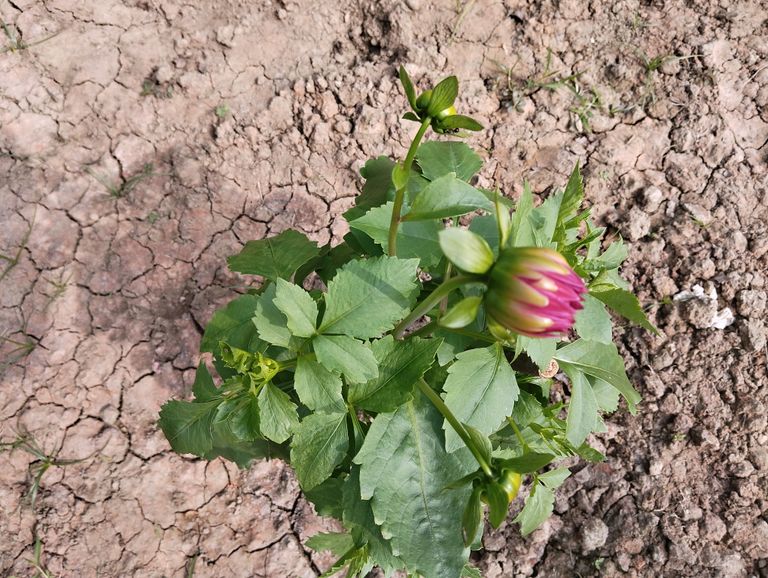
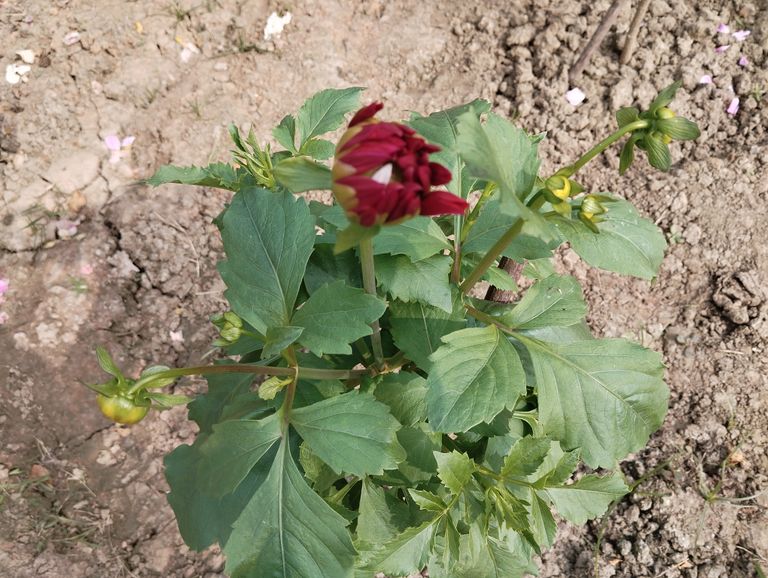
The Enchanting World of Dahlia Gardens
A garden filled with vibrant colors, mesmerizing shapes, and a serene ambiance is the dream of any flower enthusiast. Among the myriad of floral beauties, dahlias hold a special place. Known for their spectacular blooms and diverse varieties, dahlia gardens are a testament to nature's artistic brilliance.
A Brief History of Dahlias
Dahlias, native to Mexico and Central America, were first introduced to Europe in the late 18th century. Named after the Swedish botanist Anders Dahl, these flowers have captivated horticulturists and garden lovers worldwide. Over the years, hybridization has led to more than 40 species and thousands of cultivars, each with its unique charm.
Why Choose Dahlias for Your Garden?
Dahlias are versatile, thriving in a variety of climates and soil types. Their stunning array of colors, ranging from deep reds to soft pastels, and their intricate petal designs make them a favorite among gardeners. Moreover, dahlias bloom from mid-summer until the first frost, offering a long-lasting spectacle of beauty.
Planning a Dahlia Garden
- Selecting the Right Varieties
Dahlias come in various sizes, from petite pompons to giant dinnerplate varieties. Depending on the garden's size and design, you can mix different types to create an enchanting landscape. Popular choices include:
Dinnerplate Dahlias: Large, show-stopping blooms perfect for centerpieces.
Cactus Dahlias: Unique spiky petals for a dramatic look.
Pompon Dahlias: Compact, spherical blooms ideal for borders.
- Choosing the Location
Dahlias thrive in sunny spots with at least six hours of direct sunlight daily. Ensure the garden has good air circulation to prevent fungal diseases.
- Soil Preparation
These flowers prefer well-drained, fertile soil with a slightly acidic to neutral pH (6.5–7.0). Enrich the soil with organic compost or well-rotted manure for optimal growth.
- Planting Tips
Timing: Plant dahlia tubers in spring after the danger of frost has passed.
Spacing: Space the tubers 12–18 inches apart to allow for growth.
Depth: Place the tubers 4–6 inches deep with the eye facing upward.
Caring for Your Dahlia Garden
- Watering
Dahlias require consistent watering, especially during dry spells. Water deeply 2–3 times a week, avoiding overhead irrigation to reduce disease risk.
- Fertilizing
Feed dahlias with a balanced fertilizer (10-10-10) every month during the growing season. Avoid over-fertilizing, as this may lead to lush foliage but fewer blooms.
- Staking and Pruning
Tall varieties may need staking to prevent stems from bending. Prune spent flowers (deadheading) regularly to encourage continuous blooming.
Seasonal Maintenance
- Dealing with Pests and Diseases
Common pests include aphids, slugs, and spider mites. Use natural remedies like neem oil or insecticidal soap to keep them at bay. Watch out for fungal diseases such as powdery mildew and take preventive measures by maintaining proper spacing and ventilation.
- Overwintering
In colder climates, dig up the tubers after the first frost. Dry them thoroughly and store them in a cool, dark place for replanting the following year.
Creating a Visual Spectacle
- Companion Planting
Pair dahlias with other flowers like marigolds, zinnias, and sunflowers to enhance the garden's aesthetic appeal.
- Design Ideas
Borders and Pathways: Use dwarf varieties along pathways for a vibrant border.
Mass Planting: Create a stunning display with large clusters of similar-colored dahlias.
Container Gardening: Grow compact dahlias in pots for patios and balconies.
The Joy of a Dahlia Garden
Walking through a dahlia garden is an experience like no other. The vibrant blooms evoke a sense of joy and wonder, making it a perfect retreat for relaxation and inspiration. Whether you're a seasoned gardener or a beginner, cultivating a dahlia garden is a rewarding endeavor that brings nature's splendor to your doorstep.
Dahlia gardens are a celebration of beauty, creativity, and dedication. With proper care and planning, you can create a breathtaking floral paradise that not only enriches your surroundings but also nourishes your soul. So, roll up your sleeves, dig into the soil, and let the magic of dahlias transform your garden into a masterpiece.
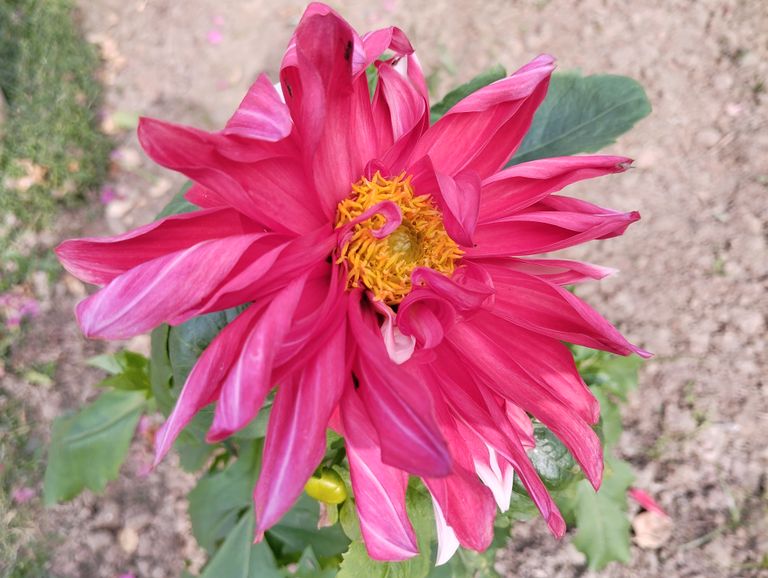
Dahlia Flower Diseases and Pests: A Comprehensive Guide
Dahlia flowers, known for their vibrant colors and stunning blooms, are popular among gardeners worldwide. However, like any other plants, they are susceptible to various diseases and pests that can hinder their growth and beauty. In this blog, we’ll explore the common diseases and pests that affect dahlias, their symptoms, and effective management strategies to keep your plants healthy and thriving.
Common Diseases of Dahlia Flowers
- Powdery Mildew
Cause: Fungal infection caused by Erysiphe cichoracearum.
Symptoms: A white, powdery coating appears on the leaves, stems, and buds. It can weaken the plant and reduce blooming.
Prevention and Control:
Ensure proper air circulation around the plants.
Avoid overhead watering.
Use fungicides like neem oil or sulfur sprays.
- Botrytis Blight (Gray Mold)
Cause: Caused by the fungus Botrytis cinerea.
Symptoms: Brown or gray spots on flowers and leaves; fuzzy gray mold on infected areas.
Prevention and Control:
Remove infected plant parts immediately.
Avoid overcrowding plants.
Apply fungicides as needed.
- Verticillium Wilt
Cause: A soil-borne fungal disease caused by Verticillium spp.
Symptoms: Yellowing of lower leaves, wilting, and stunted growth.
Prevention and Control:
Avoid planting dahlias in areas where the disease has occurred previously.
Use disease-resistant varieties.
Rotate crops regularly.
- Bacterial Wilt
Cause: Bacteria (Ralstonia solanacearum) entering through wounds.
Symptoms: Sudden wilting of the plant, yellowing leaves, and stem discoloration.
Prevention and Control:
Sterilize gardening tools.
Remove and destroy infected plants.
- Leaf Spot Diseases
Cause: Caused by fungi like Alternaria or Septoria.
Symptoms: Small, dark brown or black spots on leaves, leading to leaf drop.
Prevention and Control:
Avoid overhead watering.
Apply fungicides like copper-based products.
Pests That Affect Dahlias
- Aphids
Symptoms: Sticky residue (honeydew) on leaves, distorted growth, and the presence of small green, black, or brown insects.
Control:
Spray plants with water to dislodge aphids.
Use insecticidal soap or neem oil.
- Spider Mites
Symptoms: Yellow speckling on leaves, webbing on undersides, and overall leaf discoloration.
Control:
Increase humidity around plants.
Spray with a miticide or horticultural oil.
- Snails and Slugs
Symptoms: Irregular holes in leaves and flowers; slimy trails on plant surfaces.
Control:
Use beer traps or diatomaceous earth.
Handpick pests during early mornings or evenings.
- Caterpillars
Symptoms: Chewed leaves and flowers, visible caterpillars on the plant.
Control:
Handpick caterpillars and remove them.
Use Bacillus thuringiensis (Bt) spray as a natural control method.
- Thrips
Symptoms: Silvery streaks on leaves, deformed buds, and flowers.
Control:
Use sticky traps to capture thrips.
Spray with insecticidal soap.
General Tips for Maintaining Healthy Dahlia Plants
- Proper Planting:
Choose disease-free tubers and plant them in well-drained soil.
Ensure the planting site receives adequate sunlight.
- Watering:
Water deeply but avoid waterlogging.
Water the base of the plant to prevent fungal infections.
- Fertilization:
Use a balanced fertilizer to promote healthy growth. Avoid over-fertilization, which can attract pests.
- Pruning and Deadheading:
Regularly remove spent blooms and infected plant parts.
Keep the garden clean to reduce pest and disease risks.
- Crop Rotation:
Avoid planting dahlias in the same spot year after year to minimize soil-borne diseases.
Dahlias are relatively easy to grow, but they require proper care and attention to avoid common diseases and pests. By implementing preventive measures, regularly monitoring your plants, and taking timely action against any issues, you can enjoy vibrant and healthy dahlia blooms throughout the season. With the right care, your garden will be a colorful haven for these stunning flowers.